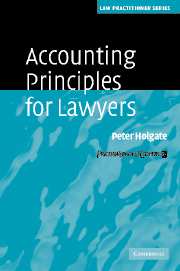Accounting Principles for Non-Executive Directors
Good quality non-executive directors are essential to good corporate governance. They bring a wealth of experience to the boardroom, and together with their fellow board members they are responsible for the company's annual report and accounts. However, very few are trained accountants. This volume explains the key elements of a listed company's annual report and accounts. Part I explains the difference between profit and cash flows, the accounting profession, the international harmonisation of accounting rules, the origins of the rules governing the preparation of accounts, the regulation of financial reporting and the overarching principles behind accounting rules. Part II discusses issues relevant to listed companies: mergers and acquisitions; earnings per share; realised and distributable profits; financial instruments; and other key topics. An appendix sets out 50 questions, linked to the chapters, which non-executive directors might like to ask at meetings of the board and audit committee.
- Explains fundamental concepts, such as the difference between profit and cash flow, and then builds on this to explain some of the key issues for listed companies, such as share-based payment and earnings per share
- Explains issues clearly and with a non-accountant reader in mind, thus equipping non-executive directors with a degree of technical understanding of a subject for which they have legal responsibilities
- Suggests questions which non-executive directors might ask at meetings of the board and audit committee, thus improving a reader's potential contribution to such meetings
Product details
March 2009Hardback
9780521509787
276 pages
234 × 160 × 18 mm
0.57kg
Available
Table of Contents
- 1. Introduction
- 2. Accounting in the UK and the effects of international harmonisation
- 3. The legal framework for accounting
- 4. The accountancy profession and the regulatory framework for accounting and auditing
- 5. Substance over form
- 6. Communicating accounting information
- 7. Current trends in accounting
- 8. Individual entity and consolidated financial statements
- 9. Presentation of financial statements
- 10. Earnings per share
- 11. Mergers and acquisitions
- 12. Interaction of accounting with tax
- 13. Assets
- 14. Liabilities
- 15. Leases
- 16. Pensions
- 17. Financial instruments
- 18. Share-based payment
- 19. Realised and distributable profits
- 20. Disclosures in published annual reports.





